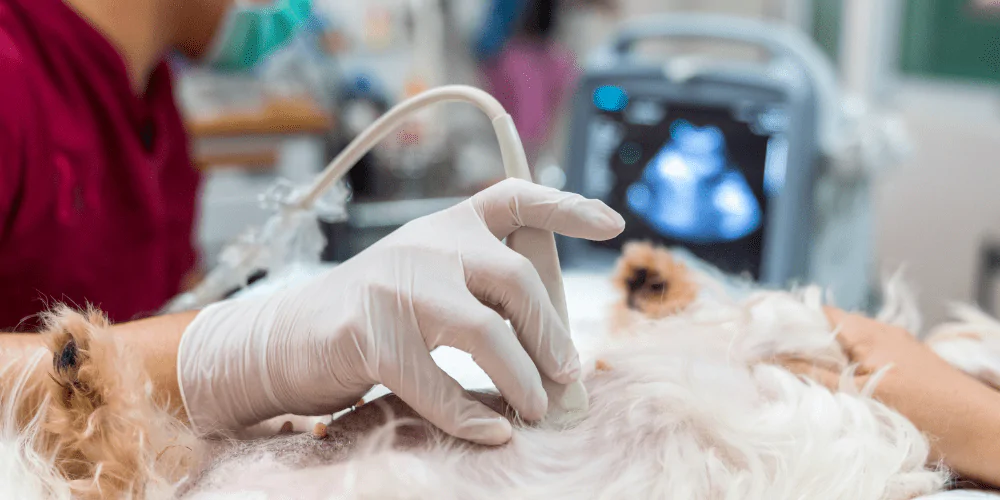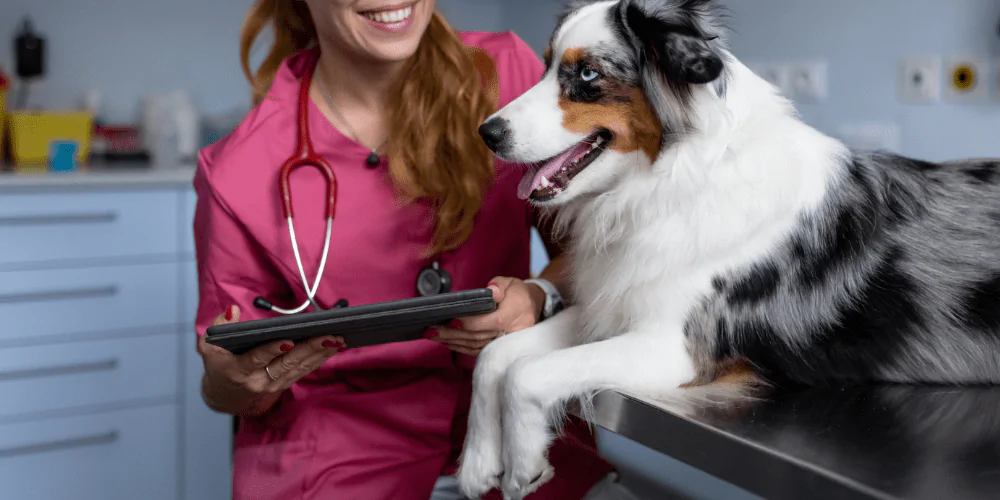
Understanding phantom pregnancy in dogs

Philippa Short
20 March 2023 | 4 minutes read
If you have an unspayed female dog in the family, there’s a chance she could have a phantom pregnancy one day.
Expert dog behaviourist Philippa Short shares what you need to know about recognising, treating, and preventing this common condition.
- An overview of female dog hormones
- What is phantom pregnancy in dogs?
- What are the physical symptoms of dog phantom pregnancy?
> What are the behavioural signs of dog phantom pregnancy? - How is dog phantom pregnancy diagnosed?
- How is dog phantom pregnancy treated?
- How do you stop your dog having a phantom pregnancy?
An overview female dog hormones
Before we delve into the details of phantom pregnancy, let’s have a quick rundown of your dog’s hormones and how they work.
- Oestrogen – seasonal hormone
- Progesterone – pregnancy hormone
- Prolactin – breastfeeding hormone
When your female pup comes into season:
- They start with high levels of oestrogen
- After ovulation has happened (between days 10 and 18 of the season), progesterone kicks in
- Progesterone peaks 20 days after ovulation
- When progesterone levels fall, prolactin increases
- Prolactin peaks 40-60 days after ovulation and then rapidly drops if there’s no pregnancy

What is phantom pregnancy in dogs?
Phantom pregnancy is a condition where your dog feels and acts pregnant without actually being pregnant. It’s also known as a phantom or pseudo pregnancy.
In the wild, phantom pregnancies help female dogs to share the load of child rearing and allows them to wet nurse each other’s young. So if a mother was killed, the rest of the family unit can care for her litter.
Phantom pregnancies often happen six to 12 weeks after a dog’s heat season. This can range from three to 14 weeks depending on the individual pup.
Breeds that are more prone to phantom pregnancies include:
- Afghan Hounds
- Boxers
- Dachshunds
- Dalmatians
- Basset Hounds
- Pointers

What are the physical symptoms of dog phantom pregnancy?
Your girl absolutely believes she is pregnant, so the physical symptoms of phantom pregnancy are very similar to those of a normal dog pregnancy:
- Large mammary glands
- Weight gain (thickening through the abdomen)
- Going off her food and/or feeling queasy
- Vomiting and diarrhoea
- Bad morning sickness (or just a little bit at the beginning)
- Increased hunger
- Drinking and weeing more
- She can even have full lactation
> What are the behavioural signs of dog phantom pregnancy?
Once again, phantom pregnancy behaviour is very similar to that of a real dog pregnancy:
- Nesting – under stairs, under tables, behind sofas, in the bed
- Digging outside or in blankets
- Carrying and hoarding/mothering inanimate objects
- Feeling anxious or worried, sometimes escalating to aggression
- Feeling lethargic or generally unsure within themselves
- Licking, similar to how a mother would clean her litter – her feet, nesting place, the inanimate object “baby”

How is dog phantom pregnancy diagnosed?
A phantom pregnancy diagnosis comes from a vet. Blood tests which check your dog’s prolactin levels are unreliable, so your vet will try an ultrasound instead.
They also use the ultrasound to scan her uterus for pyometra, as this can be mistaken for phantom pregnancy.
Signs of pyometra include:
- A swollen abdomen
- Eating more
- Drinking more
- Raised temperature
Your vet will ask about your girl’s seasonal history to know if she’s been mated.

How is dog phantom pregnancy treated?
There’s two ways you can treat your dog’s phantom pregnancy – either letting her work through it naturally or using medication.
If you choose the conservative option of letting her work through it naturally, you’ll still need to give a bit of a helping hand.
- Stop her from licking. This stimulates milk production and can lead to mastitis. Using a blow up collar, doughnut collar, or vest can prevent her from licking her mammary glands/teats.
- Take her out of emotional nursing mode (which can keep her hormone levels high). But don’t take her “baby” away in front of your dog, as this may trigger protective behaviour. Instead, use treats to encourage her out for a garden wee or a walk. Then you can go in and remove all of her fake puppies.
You’ll need to take your pup to the vet if you’d like to try medication. They’ll check her over and give her something to help get her through her phantom pregnancy. Your vet may also recommend some diet restrictions to help with stopping milk production.
Not using medication puts your pup at a higher risk of getting mastitis, which can be very painful.

How do you stop your dog having a phantom pregnancy?
Dogs who have one phantom pregnancy are likely to get them frequently.
The ultimate way to prevent phantom pregnancy is via full spaying (known as an ovariohysterectomy).
But if for any reason you don’t want to spay your girl, there’s natural ways to help prevent phantom pregnancy or ease symptoms. These include:
- Homeopathic or herbal remedies such as raspberry leaf tea or Pulsatilla
- Essential oils like rose otto, rose damascena, and clary sage
Always go to a qualified expert (such as a holistic vet or animal herbalist) before trying any natural remedies.
It’s also important to remember that this approach doesn’t work for every dog. It may prevent phantom pregnancy for some and only ease symptoms for others.
Protect your top girl with flexible dog insurance from Petsure.


